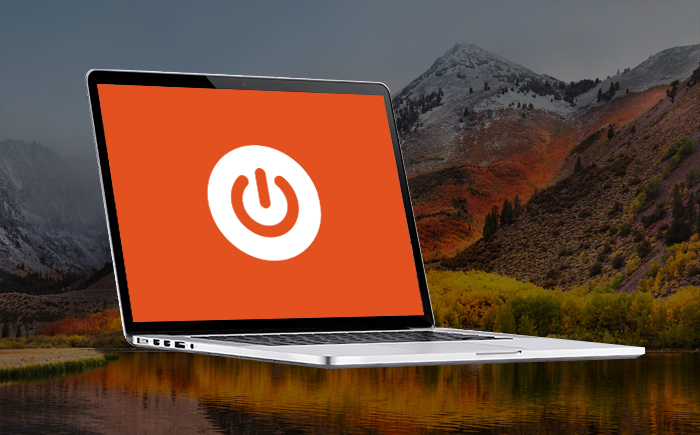Apple may provide or recommend responses as a possible solution based on the information provided; every potential issue may involve several factors not detailed in the conversations captured in an electronic forum and Apple can therefore provide no guarantee as to the efficacy of any proposed solutions on the community forums. Last Tuesday, Facebook launched what it portrayed as a full-throated defense of small businesses. In taking out full-page ads in major newspapers and creating a webpage encouraging people to “Speak Up for Small Businesses,” the social networking giant argued that a change in Apple’s mobile operating system would decimate family-run enterprises by preventing them from targeting people. Mac App Store is the simplest way to find and download apps for your Mac. To download apps from the Mac App Store, you need a Mac with OS X 10.6.6 or later.
Apple does not let filmmakers show villains using iPhones on camera, movie director Rian Johnson said in a new interview with Vanity Fair.
'Apple, they let you use iPhones in movies, but—and this is very pivotal if you're ever watching a mystery movie—bad guys cannot have iPhones on camera,' Johnson said. Johnson said he was reluctant to reveal that tidbit 'because it's going to screw me on the next mystery movie that I write,' but he added, 'forget it, I'll say it. It's very interesting.'
'Every single filmmaker that has a bad guy in their movie that's supposed to be a secret wants to murder me right now,' Johnson said. He made the comment while talking about a scene from his mystery film Knives Out. The remark is at the 2:50 mark of this video:
We contacted Apple today to ask if Johnson's comments were accurate, and we asked for details on what kinds of product-placement arrangements Apple has with movie makers. We'll update this story if we get a response.
AdvertisementNature of Apple’s demand unclear
What isn't clear from Johnson's remarks is whether there's any legal force to Apple's alleged demand that movie villains not use iPhones. If Apple is paying for product placement, it can obviously exert influence over how its products are used on screen. In other cases, movie studios might be cautious about respecting Apple's wishes in order to avoid lawsuits, even if the studios would be within their rights to have a villain use an iPhone in a movie scene.
'I'm comfortable saying that moviemakers don't need a license [from product makers] to have characters using everyday products in normal ways,' Legal Director John Bergmayer of advocacy group Public Knowledge, who specializes in intellectual property issues, told Ars today. 'Maybe you could gin up some scenario where there's an implied endorsement, but that seems rare—not that this would discourage frivolous lawsuits.'
Public Knowledge has advocated against overzealous enforcement of trademarks over the years.
Bergmayer said he doubts that 'merely having a bad guy driving a car or using a phone' could be considered tarnishment of a trademark.
He also noted that Apple could merely be restricting how movie studios use products that are given to them by Apple. 'If Apple just puts strings on the use of free stuff they give to production houses, I don't think I care in the least,' Bergmayer said.
In Knives Out, 'you can see several other characters who are suspects carry or use iPhones,' but 'the ultimate bad guy... does not have an iPhone in the film,' CNBC wrote today.
Make your Mac invincible

When Wi-Fi stops working on a Mac, it can be a nightmare. All of a sudden, you can’t make progress or even start on something without an internet connection.
Most of us take the always-on Wi-Fi connectivity for granted. Even when traveling thousands of miles from home in developing countries, most businesses, homes, and even public spaces are equipped with modems that broadcast wireless internet.
How to fix Mac won't connect to Wi-Fi
In many respects, Wi-Fi has become a commodity, a necessity for the smooth functioning of business, academia, governments, and the media. Thanks to Wi-Fi, we are more connected than ever before. Our music, emails, and even shopping are dependent upon it.
So if you’ve ever had Wi-Fi connectivity issues on a Mac, you might want to save this article for offline reading, just in case. There are a few ways to these problems.
1. Check your macOS
When Mac users update their operating system, Wi-Fi connectivity can vanish.
At the time of the original version of Catalina, a lot of users found they couldn't connect to Wi-Fi, which made it harder for Apple to release an update that included a patch solving this particular problem. In some cases, users had to download the updated version using a phone as a Personal Hotspot, which caused other problems, such as extra data costs.
Mac Is Bad Hotlinemac Is Bad Enough
Unfortunately, as a result of the recent macOS Big Sur release, some users were experiencing the same problem. You can find step-by-step instructions on how to fix Big Sur Wi-Fi problem (as well as other issues) here.
Turn Wi-Fi on and off
One way to fix this is to switch your Wi-Fi off and back on again. At the same time, it may also be worth changing the name of your home (or office) network and setting a new password, which you can do through your internet provider. If necessary, you should be able to do this through a mobile phone, and then check whether your Mac will connect again.
2. Wi-Fi signal issues

Sometimes it’s Wi-Fi signal causing all the problems. If that’s what you’re suspecting, here are the possible solutions:
Run a speed test and get a better signal
A good way to work out whether the problem is the Mac or Wi-Fi itself is using an analyzer app. To analyze your Wi-Fi network signal strength, use WiFi Explorer or NetSpot.
You may find that furniture and walls in your place are blocking or reducing the signal. When you are checking the results, it might be helpful to move your wireless router to a better location or ask if your broadband provider can install a signal booster.
Make WiFi faster on Mac
Download Setapp to declutter your Mac and make WiFi powerful. There's at least one tool that handles the task perfectly.
Don’t trust public networks
Ensure your personal information is securely protected on public Wi-Fi. While every public network can potentially “read” the data you send and receive, dealing with sensitive information on a public network is a huge risk. To stay safe, control your network connection with Activity Monitor or iStat Menus— perfect for real-time tracking of what’s being sent and received via network.
To prevent suspicious apps from accessing your data, use TripMode. The app allows to activate blocking right from your menu bar. So it’s a one-switch solution that you can use every time your Mac connects to a public network.
Secure your private network
Using your own network is certainly more secure than accessing public ones. But it’s never a risk-free deal. Private or public, there are a few tips that will help you stay safe:
Change the SSID name so that it’s hard to identify the type of router you use.
Solidify encryption. There are several options for Wi-Fi protection, out of which WPA2 is considered one of the most secure.
Use a VPN client. A reliable VPN app like Shimo will help you handle and place restrictions on the network you use. Plus, it has a module for setting multiple connections.
3. Forget your Wi-Fi network
Sometimes you need to let go to reconnect again. That also works for Wi-Fi signals.
Assuming you’ve already tried rebooting your Mac and router, disconnecting entirely is a tried-and-tested solution.
Here are the steps for doing this slightly trickier fix:
- Turn off Airport
- Go to Systems Preferences
- Network > Select Wi-Fi
- Click Advanced
- Select the network you want to disconnect from and click on minus, then agree.
Do that on any other device you can’t connect with, and then start the process to connect to that network, entering the password, and (fingers crossed) you should be connected again.
4. Declutter your Mac
One of the other problems that could be causing connectivity issues is bloat, junk, and clutter. Over time, Macs can get full of things they really don't need to store, such as cache files, email downloads, browser extensions and viruses. All of these slow down and overheat Macs, which could impact your connectivity as well.
Then, use CleanMyMac to clean up your macOS. This app is an effective solution and much-needed antidote to slow Mac performance. You can use it to dig up junk cluttering up Macs, delete unused apps completely, tidy up email folders and attachments, and remove plugins you don't need.
So if you’re wondering how to fix Wi-Fi and you’ve already tried every network-related strategy, it’s probably your Mac’s fault. CleanMyMac X will clear caches, browser extensions, and declutter disks and hard drives so that your Mac is operating at peak performance again. It also includes health monitors, so you can avoid similar issues in the future. Dive into Extensions, Uninstaller, and System Junk modules to clear away whatever can hinder your network connection.
5. Contact your broadband provider
Your broadband provider should have a speed testing function within wireless routers or your customer account portal. Increasing the speed, or switching to a faster provider, could be the solution to Wi-Fi connectivity problems, providing you’ve tried everything else first.
Prepare beforehand
Given you’ve already saved this article for offline reading, it might also be a good idea to download all the apps mentioned above, so you don’t have to use your phone’s data when the Wi-Fi crisis hit, which, hopefully, it never will.
Meantime, prepare for all the awesome things you can do with Setapp.
Read onMac Is Bad Hotlinemac Is Bad For You
Sign Up
